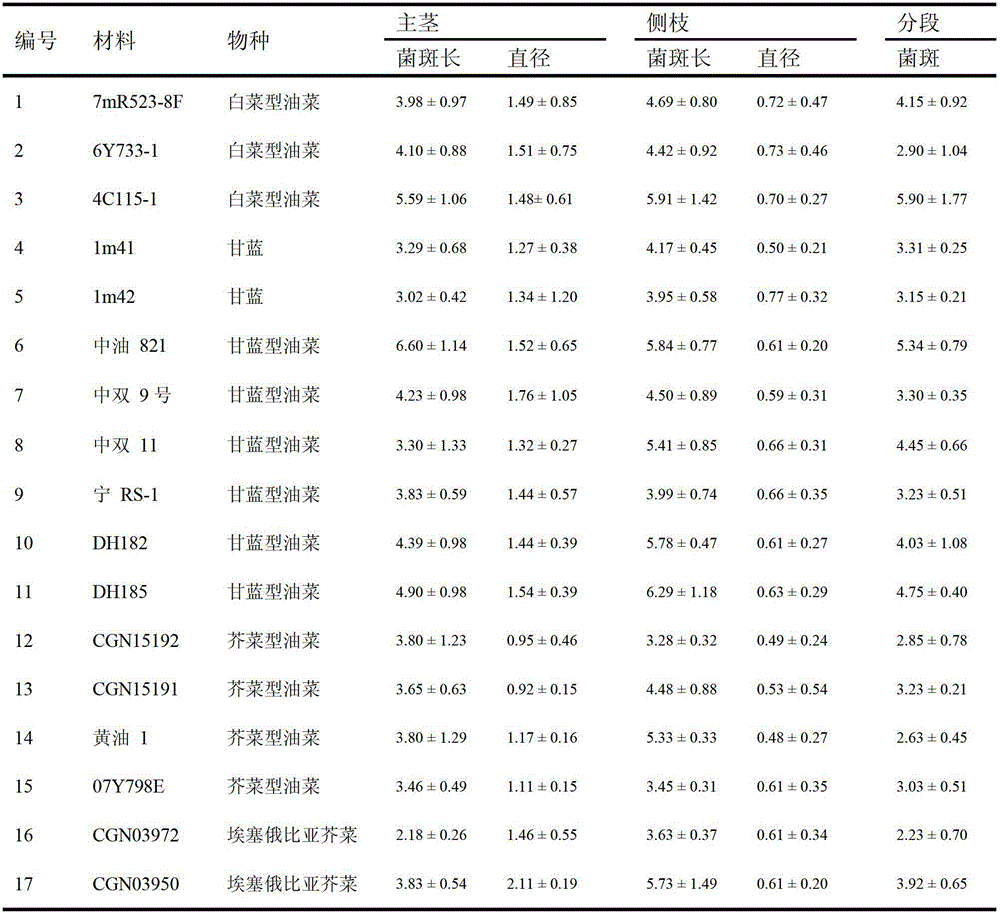A method for identifying resistance to Sclerotinia sclerotiorum by plant in vitro stem inoculation
A sclerotinia and stem technology, which is applied in the field of plant disease and insect resistance identification, can solve the problems that leaf resistance cannot fully reflect stem resistance, field inoculation identification fails, and inoculation identification is unstable, and achieves stable inoculation identification, The effect of short cycle and simple method
- Summary
- Abstract
- Description
- Claims
- Application Information
AI Technical Summary
Problems solved by technology
Method used
Image
Examples
Embodiment 1
[0011] 1. Preparation of Inoculum
[0012] 1) The pathogenic bacteria were collected in the experimental field of Chongqing Rapeseed Engineering Technology Center. The purification process is as follows: the collected sclerotia were inoculated in potato dextrose medium (PDA), cultured in the dark at 22°C for 2 days, and the hyphae were picked from the edge and inserted into New PDA medium, after 2 days, transfer the hyphae on the edge again, and so on, until the hyphae grown in the medium do not contain other miscellaneous bacteria. The PDA medium is prepared as follows: 200g potatoes, 20g sucrose and 15g agar powder, and the volume is adjusted to 1L.
[0013] 2) Preparation of inoculum (PDA mycelium block) for in vitro experiments: take a small piece of the activated strain, inoculate it in the center of a sterile petri dish with PDA medium, and culture it at 22°C and 85% humidity for 2 After the mycelia evenly covered the surface of the culture medium, a hole puncher with a...
PUM
 Login to View More
Login to View More Abstract
Description
Claims
Application Information
 Login to View More
Login to View More - R&D
- Intellectual Property
- Life Sciences
- Materials
- Tech Scout
- Unparalleled Data Quality
- Higher Quality Content
- 60% Fewer Hallucinations
Browse by: Latest US Patents, China's latest patents, Technical Efficacy Thesaurus, Application Domain, Technology Topic, Popular Technical Reports.
© 2025 PatSnap. All rights reserved.Legal|Privacy policy|Modern Slavery Act Transparency Statement|Sitemap|About US| Contact US: help@patsnap.com


